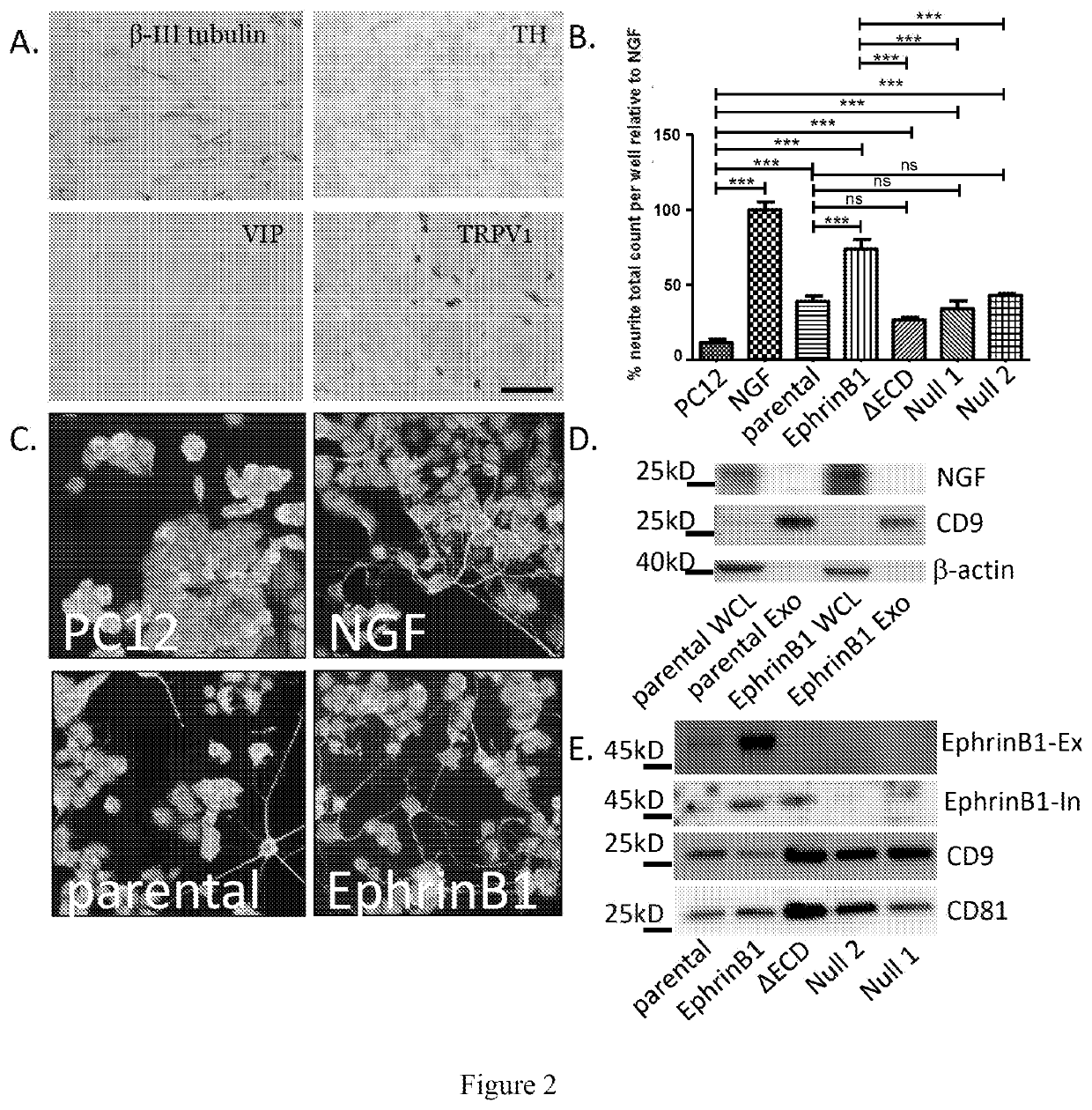Inhibitors of ephrin b1 for tumor treatment
a tumor and ephrin b1 technology, applied in the field of tumor treatment inhibitors of ephrin b1, can solve the problems of unclear mechanistic understanding of how tumors obtain neural elements, high tumor proliferative index, and high risk of recurrence and metastasis
- Summary
- Abstract
- Description
- Claims
- Application Information
AI Technical Summary
Benefits of technology
Problems solved by technology
Method used
Image
Examples
examples
[0072]We utilize a murine model of human papillomavirus induced (HPV+) oropharyngeal squamous cell carcinoma (OPSCC) which consists of C57Bl / 6 oropharyngeal epithelial cells stably expressing HPV16 viral oncogenes, E6 and E7, H-Ras and luciferase (mEERL cells) [18-21]. The HPV16 E6 oncoprotein interacts with the cellular phosphatase and tumor suppressor, PTPN13; this interaction results in PTPN13's degradation [19, 20]. This is relevant because PTPN13 interacts with many cellular proteins including EphrinB1 which is also a phosphatase substrate. EphrinB1 is a single pass transmembrane protein ligand that binds and activates the Eph receptor tyrosine kinases. Here we show that tumor released exosomes package EphrinB1 and stimulate neurite outgrowth of PC12 cells in vitro. Compromise of EphrinB1 expression or function significantly attenuates this activity. Moreover, exosomes purified from human squamous cell carcinoma cell lines and from head and neck cancer patient plasma and tumor ...
example 2
[0135]This example demonstrates that other solid tumors (exemplified by colorectal, melanoma and breast tumors) also release factors which may also include exosomes and that these factors contribute to tumor innervation. We harvested conditioned media from colorectal (CT26), melanoma (B16) and breast tumor (4T1) cell lines and tested on PC12 cells. CT26 is a cell line derived from a BALB / c mouse that was treated with N-nitroso-N-methylrethane. This cell line is widely used to study colorectal cancer. B16 is a melanoma mouse cancer cell line that spontaneously arose in a C57Bl / 6 mouse. it is widely used to study melanoma. 4T1 is a 6-thioguanine resistant cell line selected from the 410.4 (a mouse mammary adenocarcinoma cell line) tumor without mutagen treatment. When implanted into BALB / c mice, 4T1 cells are highly metastatic and go to the lungs, liver, lymph nodes and brain. This cell line is highly used as an animal model of stage IV human breast cancer. PC12 is a rat pheochromocyt...
example 3
[0138]Given the effect of E6 on PTPN13 and EphrinB1 activation, we wondered if merely over-expressing EphrinB1 in an HPV negative squamous cell carcinoma cell line, would be sufficient to promote increased neurite outgrowth. Thus, we stably over-expressed EphrinB1 in SCC1 cells and tested exosomes on PC12 cells. Exosomes from SCC1-EphrinB1 cells induced significantly more neurite outgrowth than those from the SCC1 parental cells (FIG. 7A). To determine if this increased activity similarly affected tumor innervation, immune incompetent NOD SCID mice were implanted with either SCC1 or SCC1-EphrinB1 cells (N=5 mice / group) and tumor growth monitored for 10 days. SCC1-EphrinB1 tumors grew significantly faster than SCC1 parental tumors (FIG. 7B).
PUM
| Property | Measurement | Unit |
|---|---|---|
| size | aaaaa | aaaaa |
| size | aaaaa | aaaaa |
| resonance frequency | aaaaa | aaaaa |
Abstract
Description
Claims
Application Information
 Login to View More
Login to View More - R&D
- Intellectual Property
- Life Sciences
- Materials
- Tech Scout
- Unparalleled Data Quality
- Higher Quality Content
- 60% Fewer Hallucinations
Browse by: Latest US Patents, China's latest patents, Technical Efficacy Thesaurus, Application Domain, Technology Topic, Popular Technical Reports.
© 2025 PatSnap. All rights reserved.Legal|Privacy policy|Modern Slavery Act Transparency Statement|Sitemap|About US| Contact US: help@patsnap.com



